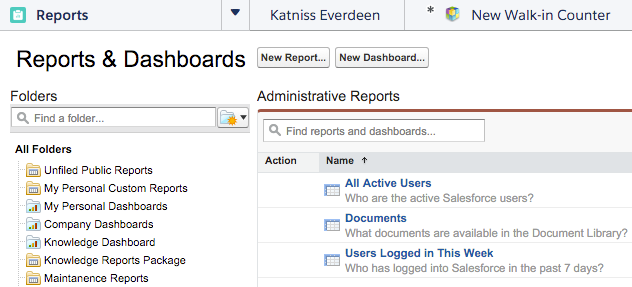When working in Enterprise CRM and setting up new business processes it can sometimes be confusing to remember which type of Object you need set up for what purpose. This article is intended as an overview of the differences between and uses of Queues, Views, and Reports.
Queues
Queues in Salesforce allow you to assign logic behind the ways Cases get assigned to certain Users or groups of Users. For example, all emails that go to [email protected] should create a Case in a Queue called Example Queue and be available for 3 of our Users that manage the Example Queue.
The creation of the Queue (the logic and assigned users for certain Cases) will create a default View that will be available in the Case tab dropdown so that you can use the View to see all of the Cases assigned to that Queue.
Queues are set up by the Internal Support Team. Work with them to ensure that any Queues you need are set up per your desired business goals.
Views
The default View created when a Queue is created is just showing all of the Cases assigned to that Queue. Views are able to be used for more than just Queues and/or Queue management. Views are different criteria that are able to be placed on Object Tabs that will narrow down the different records you're seeing in a list on that Tab.
The View Menu is always at the top of an Object Home Tab and available Views for that Object can be chosen from a dropdown menu. For example, you could create a View in the Case Tab that is not just the default View for our Example Queue, but is only showing anything within my Example Queue with a Status of New. You can select the items that show in the View to make things useful for you (Status, Subject, ACT information etc.).
For example, you could create a View in the Case Tab that is not just the default View for our Example Queue, but is only showing anything within my Example Queue with a Status of New. You can select the items that show in the View to make things useful for you (Status, Subject, ACT information etc.).
Views are helpful to use and get live data from within CRM. You can see how many Cases are assigned to a certain User with a certain Status within a certain timeframe.
Reports
Sometimes, however, you need information from more than one Object to get the data that you might need. If you wanted to pull a list of Cases assigned to a certain Queue (from the Case record) that were only assigned to Contacts from a certain zip code (from the Contact record) you would not be able to a create a View for that on either the Contact or Case Tab as you'd only be getting one of the two criteria you need. That is when you would need a Report from the Report Tab.
Your internal team may have pre-loaded reports in folders or you may need to create your own.
